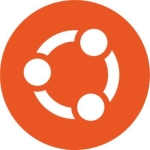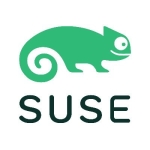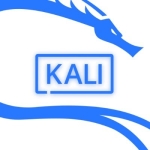I use the solution in the company to build a lot of our software environments, so we keep different baselines on it. Right now, I'm working on setting up and installing Ansible manually, so I haven't used Red Hat Ansible Automation Platform yet, a reason why I have been still using my Red Hat Enterprise Linux (RHEL) server.
In terms of features, I found it great when I talked with Linux subject matter experts about Ansible. They further mentioned that it was native to Red Hat, which is why it wasn't going to bring over more packages or modules. The packages or modules in the tool are already there but are just not enabled because they weren't being used before I asked about them. It is super easy to enable the tool's packages or modules when I want to start messing with it.
Red Hat Enterprise Linux (RHEL) has helped me centralize development because it has a standard, which is why my company can't really have the option to mess with its different technologies. Our company's customers don't want to use Ubuntu or any other such operating systems, which is why my company has to use Red Hat Enterprise Linux (RHEL). I guess the tool is easily centralized because that is its standard, and that is the only option one has unless someone wants Windows, but again, developers don't want Windows, and so there are no other options.
Our organization has a team to take care of the containerization part. I am mostly on the infrastructure side, but my company has started to ask me for Podman Desktop and all these different container platforms, and I haven't used any of them yet.
If I dissect the built-in security features of Red Hat Enterprise Linux (RHEL) for risk reduction, business continuity, and compliance, I would say that we use VMware for risk reduction so that we have a high availability. On the top of my head, I think the Linux team probably knows more about reducing risks. Our security team has all these STIGs they want us to apply, so I don't know how much manipulation they actually have to do.
If I dissect the built-in security features of Red Hat Enterprise Linux (RHEL) for risk reduction, business continuity, and compliance, I would say that we use VMware for risk reduction so that we have a high availability. On the top of my head, I think the Linux team probably knows more about reducing risks. Our security team has all these STIGs they want us to apply, so I don't know how much manipulation they actually have to do. For business continuity, my company uses VMware, considering the ease of making snapshots of our environments, but I believe we could probably do the same with different operating systems. In our company, we just take lots of snapshots, and then if we have another VMware instance, we could just build it right back. The only compliance I know about was associated with our company's customer and their STIG requirements, but I don't know how Red Hat Enterprise Linux (RHEL) helps with it, especially considering that in our company, we have to manipulate it and how we want to do it.
In terms of the portability of applications and containers built on Red Hat Enterprise Linux (RHEL) to keep our organization agile, I would say that we have an applications team that would do it in our company. I just make sure that our company's VMs have OS and network connectivity since there is a different team that takes care of the applications.
Right now, since my company is in an air-gapped on-prem network, it is really tough to go through all the RPMs that we have to have based on different STIGs. Whenever in our company, we have to install the tool, we see that something or the other is missing, and so of the hundreds of things mentioned in the list, we have to find whether we need a particular RPM or if we need to take this one out, and that is always a trouble for the team managing Linux in our company.
I have been using Red Hat Enterprise Linux (RHEL) for more than five years.
When I spoke to one of the speakers the other day, who was a software development manager, I was told how much one could trust Red Hat Enterprise Linux (RHEL). I believe that Red Hat Enterprise Linux (RHEL) is considered a standard for a reason.
I believe that if you have enough license to support the product in your environment, then you can scale the product depending on how big your license is, and it is a super easy process where one can roll out a whole bunch of VMs and VMware.
As my signature block comes with Lockheed Martin, I think the tool's support team has been pretty attentive. If I go to a wide-scale service and once Red Hat Enterprise Linux (RHEL) sees what kind of a customer I am, I get to go to their specialized sectors, and the support has been pretty fast. I have had no issues with the product's support team. I don't use the product's support services very often. I have mainly dealt with Red Hat's support team for Ansible. I rate the technical support a seven out of ten. When I was asking the tool's support team questions when I was off the internet, I just kind of felt weird about it. For any service I ask for from the support team, I have to manipulate it depending on what we need for our company.
I have not previously used any other product, and I have worked for the government for the past twelve years using Red Hat Enterprise Linux (RHEL).
The deployment of the product has been super easy, but when we do it through VMware, I just make a VM, and then load an ISO image, after which the deployment is done. The tool's deployment is super easy, and I am pretty much a novice when it comes to Linux.
The solution is deployed on an on-premises model.
My company did not seek the help of a third party to depot the product. The deployment was carried out by our company's employees, who have been around for decades.
The government buys the product for our company and provides us with the license for the solution.
For a colleague who is looking at open-source cloud-based operating systems for Linux, I would say that Red Hat Enterprise Linux (RHEL) is a cool product for small businesses outside of the government. I work for the government, where Red Hat Enterprise Linux (RHEL) is the standard, so if my colleagues are in the government, I would tell them they have no other options.
I am not sure about the product's deployment model since it is kind of ad hoc in nature. If a developer needs another VM, our company just provisions it through VMware, so we don't have a large-scale deployment model across different availability zones. We have our program, after which we wrap it all up and then ship it out to the customer.
As I have not compared Red Hat Enterprise Linux (RHEL) to any other operating systems in the market, I rate the tool a nine out of ten.
















